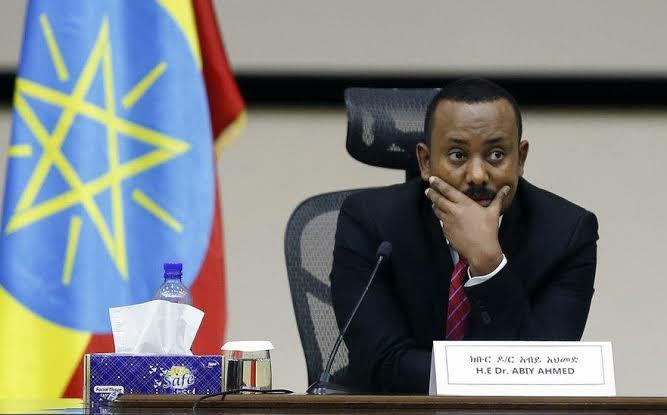NAIROBI, Kenya, Sep 6 – Foreign Affairs Cabinet Secretary Raychelle Omamo’s recent trip to Ethiopia has been viewed within the diplomatic circles as part of Addis Ababa’s continuing series of shuttle diplomacy, in the face of an ongoing conflict in Tigray and riparian tensions with Egypt and Sudan over the River Nile.
Other than bilateral discussions, Omamo engaged with her hosts on matters touching on Tigray, The Grand Ethiopian Renaissance Dam (GERD), and the Ethiopia-Sudan border dispute. Critically, however, the minister sought to advance Kenya’s interests in Ethiopia that have in the recent past seen Kenyan businesses acquire licenses to invest.
Those in the diplomatic circles say the move is a bold attempt to consolidate regional support amidst a major crisis.
“For Kenya of course, any kind of instability, or political instability in Ethiopia is a concern. Particularly because of its economic interests in Ethiopia, in terms of not only the Safaricom deal but also more in the longer run, in terms of the electricity that is promised to be produced from the Ethiopian grand renaissance dam project and these are economic concerns for Kenya,” said Dr. Aleksi Yionen, AGT, the chairperson International Relations Department, USIU.
Ethiopian Prime Minister Abiy Ahmed’s last trip to Kenya saw him and his counterpart President Uhuru Kenyatta visit the Lamu Port South Sudan Ethiopia Transport (LAPSSET) Corridor project. This partly formed the basis of the discussions which are expected to change the economic fortunes of both countries.
A stable Ethiopia is vital for Kenya economically. But there have also been concerns about the humanitarian repercussions of the situation in the country which Kenya borders to the south.
“The possibility of the conflict, and particularly in Southern Ethiopia which borders Kenya, if particularly the conflict in which the OLF or OLA is involved as one of the instigators will cause refugee flows into Kenya. that is another concern that Kenya has, in this situation,” said Dr. Yionen
In a statement to reporters on Sunday, the Ethiopian military claimed to have killed more than 5,600 members of the Tigray rebel in the north of the country.
Thousands of people are thought to have been killed and millions have been displaced from their homes, with some fleeing into Sudan.
“There is a possibility that there will be more of an exodus through Kenya, to other places, South Africa for example perhaps also to the gulf and elsewhere,” he said.
Humanitarian agencies say that 400,000 people face starvation in Tigray.
In the conflict-affected areas of Amara and Afar regions, there are another 300,000 people who are also displaced.
“That is on top of the refugees who have crossed the border into Sudan, whose number has surpassed 50,000, from Tigray. There is a concern, that this would affect Kenya much more than it is at the moment,” said Dr. Yionen
Other than attempting to rally regional support for the Tigray war, the protracted Grand Renaissance Dam with Sudan and Cairo, and the border dispute with Khartoum, Abiy has met leaders from the region to advance other economic interests of his country.
On August 26, he welcomed South Sudan’s President Salva Kiir for an official working visit to Ethiopia and said, “all-weather friends like South Sudan are essential in our time of need.”
Three days later on August 29, he was in Kampala, Uganda, where he met President Yoweri Museveni and held talks on various bilateral and regional issues.
A day later, Abiy was in Kigali Rwanda, where President Kagame held meetings with him during which they discussed various topics of mutual interest including issues specific to both countries, and the region as well as global current affairs.
The country’s Representative to the US, Ambassador Taye Atske Selassie, on August 29 thanked allies that have stood with Ethiopia “in times of our need”.
But even as Ethiopia seeks all the help it can get to deal with the troubles within its borders, it is also grappling with external disputes that have proven hard to fix.
“Sudan already has big problems in terms of internal displacement within the country, also it is hosting refugees, and if these numbers increases, it will put more tension, in the relationship between Sudan and Ethiopia. This is already tense in the border region of al fashaqa where we have fertile land that is disputed by the two states,” he said.
Diplomacy experts say that the Ethiopian government together with Amhara militias have made the important commitment to actually shield that border so that TPLF and TDF would not be able to access it.
In his shuttle diplomacy trip to the region, the Ethiopian premier sought a unified front from Egypt and Sudan over the waters of the Nile.
Uganda and Rwanda, which he visited recently alongside Kenya, South Sudan, Tanzania, and the Democratic Republic of Congo, form the upper riparian zone for the Nile River whose waters Ethiopia contributes most, but which are consumed mostly by Egypt and Sudan. The two countries are in the lower riparian areas of the river.
” The main concern here would be the refugee flows but another concern would be some sort of obscure external support that might come through that border because we know that the Nile issue, is an apple of discord particularly between Egypt and Ethiopia but also Sudan in the middle. Sudan has been siding lately quite strongly with Egypt, in this situation,” he said.
Kenya and peers at the UN Security Council have endorsed an African Union commission of inquiry into atrocities in Tigray even as the Ethiopian government began to count the cost of the war it began in November.
In July, Ethiopia, while admitting financial losses, suggested that it could now consider dialogue as a path to a permanent solution in Tigray.
Want to send us a story? Contact Shahidi News Tel: +254115512797 (Mobile & WhatsApp)


